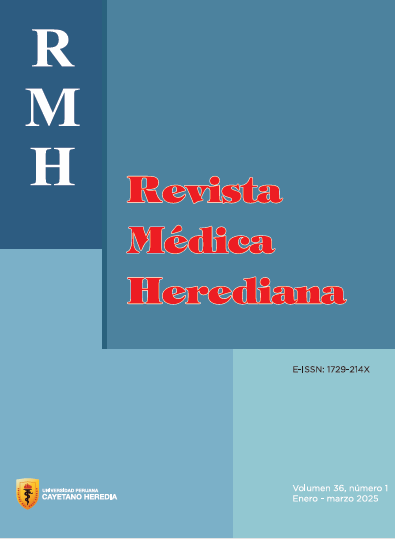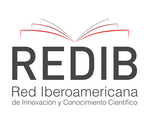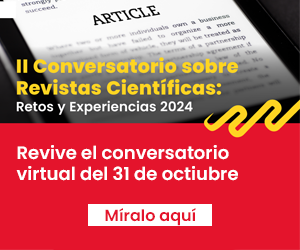Candidemia and antifungal susceptibility in Peruvian hospitals
DOI:
https://doi.org/10.20453/rmh.v36i2.6233Palavras-chave:
Antifungal agents, Candida, Candidemia, Antifungal Drug ResistanceResumo
Worldwide, Candida bloodstream infections have presented an increase in non-albicans Candida species and resistance to antifungal agents. Objective: To describe the microbiological characteristics of consecutive Candida blood culture isolates. Methods: This study analyzed 73 consecutive Candida blood isolates recovered between July 2017 and July 2019 from routine patient care at 15 Peruvian hospitals, assessing susceptibility to four antifungal agents. Results: The species most frequently detected were Candida parapsilosis 39 (53.4%), Candida albicans 23 (31.5%), and Candida tropicalis 5 (6.8%). Conclusions: All isolates were susceptible to amphotericin B, fluconazole, voriconazole, and anidulafungin. There is a predominance of non-albicans Candida cases in Peru and a high susceptibility to current antifungal drugs.
Downloads
Referências
Soriano A, Honore PM, Puerta-Alcalde P, et al. Invasive candidiasis: current clinical challenges and unmet needs in adult populations. J Antimicrob Chemother. 2023;78(7):1569–1585. doi:10.1093/jac/dkad139.
Chow JK, Golan Y, Ruthazer R, et al. Factors associated with candidemia caused by non‐albicans Candida species versus Candida albicans in the intensive care unit. Clin Infect Dis. 2008;46(8):1206-1213. doi:10.1086/529435.
da Matta D. Revisiting species distribution and antifungal susceptibility of Candida bloodstream isolates from Latin American medical centers. J Fungi. 2017;3(2):24. doi:10.3390/jof3020024.
Huang YT, Liu CY, Liao CH, Chung KP, Sheng WH, Hsueh PR. Antifungal susceptibilities of Candida isolates causing bloodstream infections at a medical center in Taiwan, 2009-2010. Antimicrob Agents Chemother. 2014;58(7):3814-3819. doi:10.1128/aac.01035-13.
Bustamante B, Martins MA, Bonfietti LX, et al. Species distribution and antifungal susceptibility profile of Candida isolates from bloodstream infections in Lima, Peru. J Med Microbiol. 2014;63(6):855-860. doi:10.1099/jmm.0.071167-0
Rodriguez L, Bustamante B, Huaroto L et al. A multi-centric Study of Candida bloodstream infection in Lima-Callao, Peru: species distribution, antifungal resistance and clinical outcomes. PLOS ONE. 2017;12(4):e0175172. doi:10.1371/journal.pone.0175172
F Krapp F, García C, Hinostroza N et al. Prevalence of antimicrobial resistance in gram-negative bacteria bloodstream infections in Peru and associated outcomes: VIRAPERU study. Am J Trop Med Hyg. 2023;109(5):1095-1106. doi:10.4269/ajtmh.22-0556.
CLSI. Reference Method for Broth Dilution Antifungal Susceptibility Testing of Yeasts: Approved Standard: M27, 4th ed. Clinical and Laboratory Standards Institute; 2017.
CLSI. Epidemiological Cutoff Values for Antifungal Susceptibility Testing: Supplement M59, 3rd ed. CLSI. Clinical and Laboratory Standard Institute; 2020.
Luo G, Mitchell TG. Rapid identification of pathogenic fungi directly from cultures by using multiplex PCR. J Clin Microbiol. 2002;40(8):2860-2865. doi:10.1128/jcm.40.8.2860-2865.2002.
CLSI. Performance Standards for Antifungal Susceptibility Testing of Yeasts: Supplement M60, 2nd ed. Clinical and Laboratory Standards Institute; 2020.
Doi AM, Pignatari AC, Edmond MB, et al. Epidemiology and microbiologic characterization of nosocomial candidemia from a Brazilian national surveillance program. PLOS ONE. 2016;11(1):e0146909. doi:10.1371/journal.pone.0146909.
Montagna MT, Caggiano G, Lovero G, et al. Epidemiology of invasive fungal infections in the intensive care unit: results of a multicenter Italian survey (AURORA Project). Infection. 2013;41(3):645-653. doi:10.1007/s15010-013-0432-0.
Ma CF, Li FQ, Shi LN, et al. Surveillance study of species distribution, antifungal susceptibility and mortality of nosocomial candidemia in a tertiary care hospital in China. BMC Infect Dis. 2013;13(1):337. doi:10.1186/1471-2334-13-337.
Cortés JA, Reyes P, Gómez CH, et al. Clinical and epidemiological characteristics and risk factors for mortality in patients with candidemia in hospitals from Bogotá, Colombia. Braz J Infect Dis. 2014;18(6):631-637. doi:10.1016/j.bjid.2014.06.009.
Tan TY, Hsu LY, Alejandria MM et al. Antifungal susceptibility of invasive Candida bloodstream isolates from the Asia-Pacific region. Med Mycol. 2016;54(5):471-477. doi:10.1093/mmy/myv114.
Garzillo C, Bagattini M, Bogdanović L et al. Risk factors for Candida parapsilosis bloodstream infection in a neonatal intensive care unit: a case-control study. Ital J Pediatr. 2017;43(1):10. doi:10.1186/s13052-017-0332-5.
Dannaoui E, Espinel-Ingroff A. Antifungal Susceptibility Testing by Concentration Gradient Strip Etest Method for Fungal Isolates: A Review. J Fungi. 2019;5(4):108. doi:10.3390/jof5040108.
Jamiu AT, Albertyn J, Sebolai OM, Pohl CH. Update on Candida krusei, a potential multidrug-resistant pathogen. Med Mycol. 2020;59(1):14-30. doi:10.1093/mmy/myaa031.
Nucci M, Queiroz-Telles F, Alvarado-Matute T et al. Epidemiology of candidemia in Latin America: a laboratory-based survey. PLOS ONE. 2013;8(3):e59373. doi:10.1371/journal.pone.0059373.
Krapp F, Rondon C, Amaro C, et al. Underutilization and quality gaps in blood culture processing in public hospitals of Peru. Am J Trop Med Hyg. 2022;106(2):432-440. doi:10.4269/ajtmh.21-0770.
Pappas PG, Kauffman CA, Andes DR, Clancy CJ, Marr KA, Ostrosky-Zeichner L, et al. Clinical Practice Guideline for the Management of Candidiasis: 2016 Update by the Infectious Diseases Society of America. Clinical Infectious Diseases. 2016;62(4):e1-50. doi:10.1093/cid/civ933.
Downloads
Publicado
Como Citar
Edição
Seção
Licença
Copyright (c) 2025 Romina Rios Blanco, Marcello Olsen Verme, Fiorella Palomino Escalante, Michelle Regal Ludowieg, Jan Jacobs, Fiorella Krapp Lopez, Beatriz Bustamante Rufino, Coralith García Apac

Este trabalho está licenciado sob uma licença Creative Commons Attribution 4.0 International License.
Os autores cedem os seus direitos à RMH para que estas possam divulgar o artigo através dos meios ao seu alcance. A revista fornecerá formulários de declaração de autoria e autorização para a publicação do artigo, que deverão ser entregues juntamente com o manuscrito. Os autores conservam o direito de partilhar, copiar, distribuir, executar e comunicar publicamente o seu artigo, ou parte dele, mencionando a publicação original na revista.




















